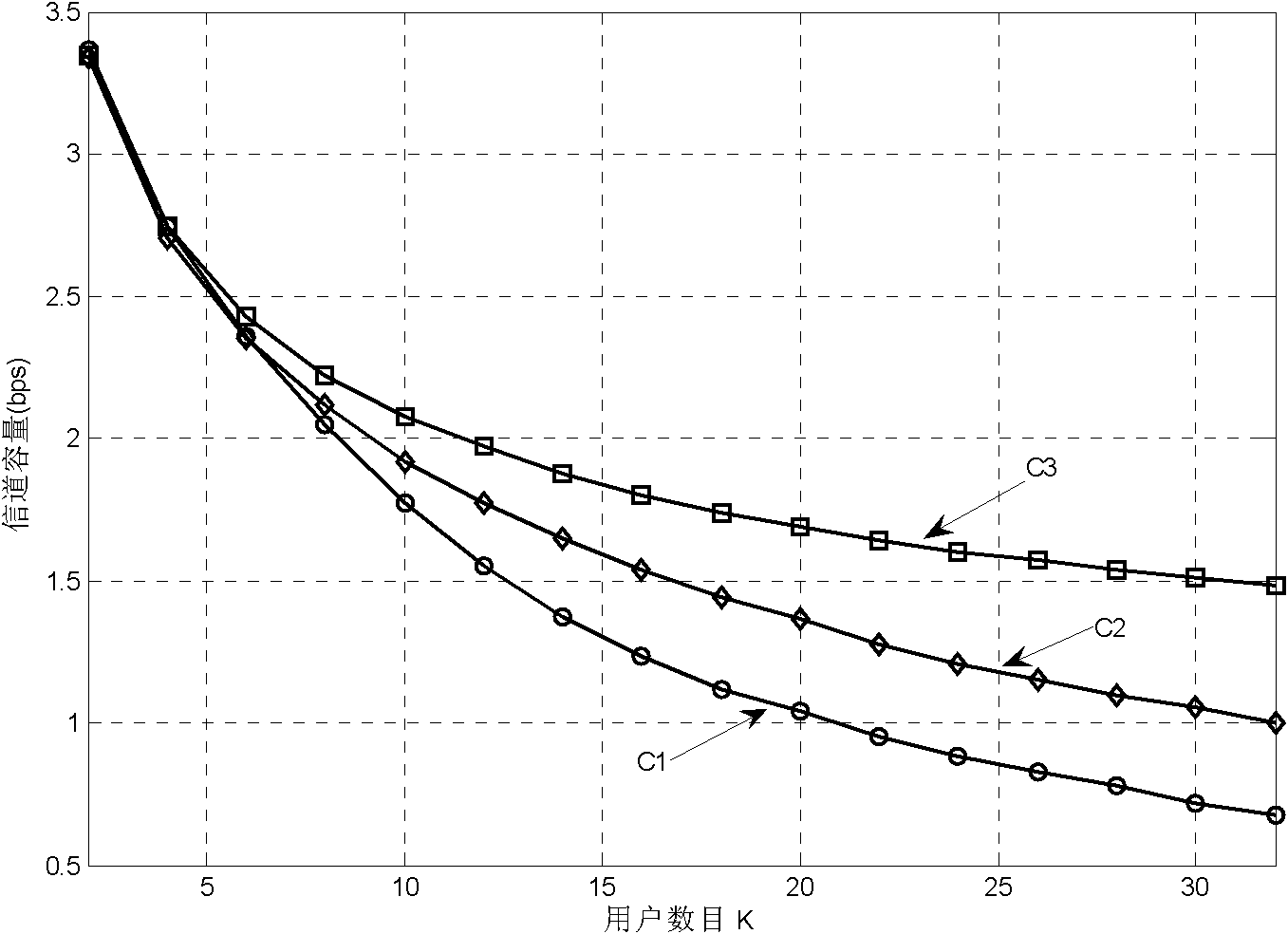Multiple-input multiple-output (MIMO) multicasting beamforming method
A beamforming method and beamforming vector technology, applied in diversity/multi-antenna systems, space transmit diversity, etc., can solve the problems of large amount of calculation, poor performance, and inability to effectively apply to actual communication systems, etc., and achieve high channel capacity , reduced computational complexity, and significant performance advantages
- Summary
- Abstract
- Description
- Claims
- Application Information
AI Technical Summary
Problems solved by technology
Method used
Image
Examples
Embodiment 1
[0018] Embodiment 1: MIMO multicast beamforming method with 8 transmitting antennas and 16 user scenarios
[0019] In this embodiment, the base station is configured with 8 transmitting antennas, a single multicast user group, and the group includes 16 user scenarios as an example to introduce the specific implementation of the present invention.
[0020] figure 1 A schematic diagram of the MIMO downlink signal processing process for user k is given. In the base station-side source sending step A1, let the source signal be x and satisfy x∈£ M×1 After the power allocation step A2, the power P is allocated to the user k, and the beamforming vector w provided in the beamforming step A3 completes the base station MIMO transmission beamforming, then the base station transmission signal can be expressed as The signal is physically transmitted through the user k transmission environment: Step A4 is transmitted through the channel, and the transmitted signal is transmitted through the ch...
Embodiment 2
[0043] Embodiment 2: MIMO multicast beamforming method with 16 transmitting antennas and variable number of users
[0044] In this embodiment, a scenario where the base station is configured with 16 transmitting antennas, a single multicast user group, and the group contains a variable number of users is taken as an example to introduce the specific implementation of the present invention.
[0045] Suppose that the number of transmit antenna configurations at the base station is M = 16, the transmit power P = 1, and the number of receive antenna configurations for each user in the MIMO multicast user group is N k =1, the number of users in the group K is variable, and the range of change is K∈[2,32]. Using Rayleigh flat fading channel, the noise variance of each user sub-channel is And it is assumed that the transmitting end accurately knows the MIMO channel state information (CSI) corresponding to each user.
[0046] For each determined number of users K in the group, the method of...
PUM
 Login to View More
Login to View More Abstract
Description
Claims
Application Information
 Login to View More
Login to View More - R&D
- Intellectual Property
- Life Sciences
- Materials
- Tech Scout
- Unparalleled Data Quality
- Higher Quality Content
- 60% Fewer Hallucinations
Browse by: Latest US Patents, China's latest patents, Technical Efficacy Thesaurus, Application Domain, Technology Topic, Popular Technical Reports.
© 2025 PatSnap. All rights reserved.Legal|Privacy policy|Modern Slavery Act Transparency Statement|Sitemap|About US| Contact US: help@patsnap.com



